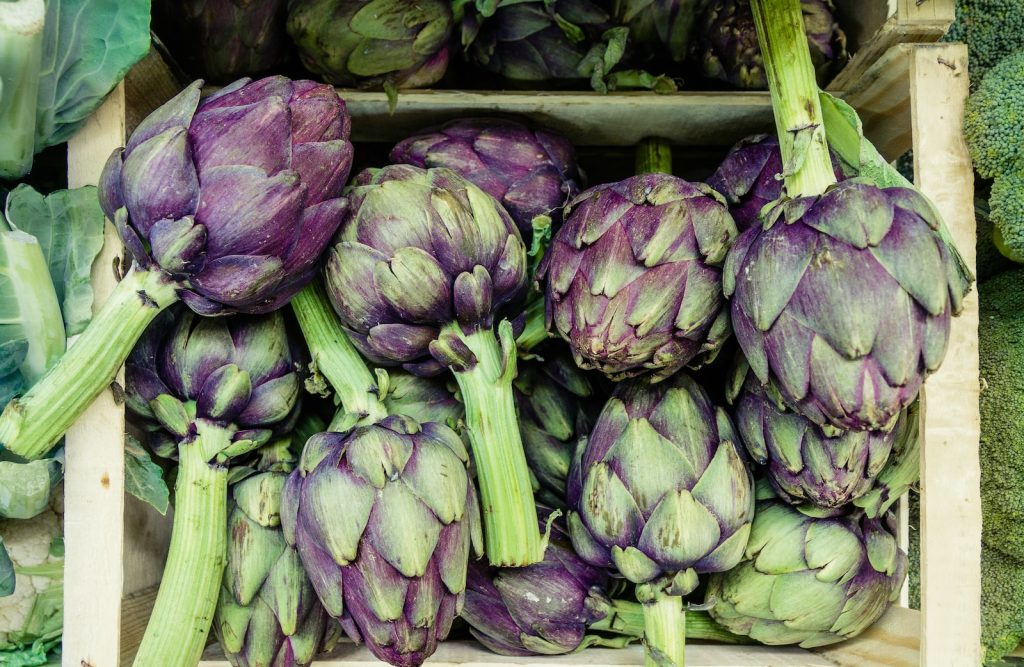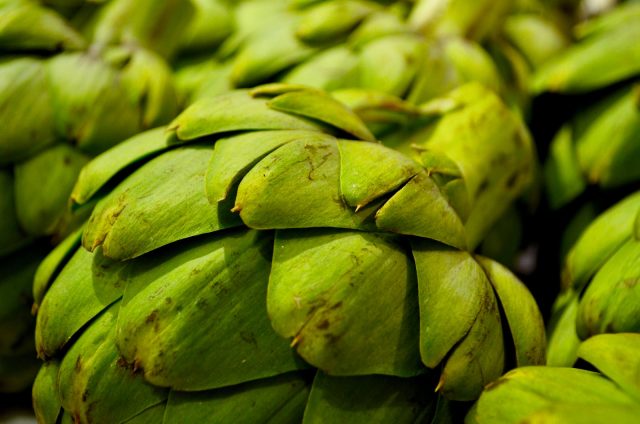Why grow Artichoke?
Artichoke is a delicious and nutritious vegetable that can be eaten cooked or raw. It has a unique flavor that sets it apart from other vegetables, making it ideal for adding to salads, soups, stews, and side dishes. Growing artichoke in your garden is great for the environment and provides fresh produce seasonally. Learn the basics of how to plant and care for artichoke so you can enjoy this tasty veggie all year round.
If you want to add an interesting variety of vegetables to your garden this season, look no further than artichoke! Not only will its unique flavor add some zest to your cooking repertoire – its health benefits are unparalleled.
The best time to plant Artichoke
When it comes to planting artichokes, timing is critical. Knowing the best time to plant this vegetable will determine your success in harvesting a ripe and juicy crop. Planting at the right time of year can ensure that your artichokes are ready for harvest when the weather is still warm enough for them to thrive.
The best time to plant artichokes depends on where you live and your climate zone. Generally speaking, most gardeners recommend planting as soon as the soil temperature reaches 60 degrees Fahrenheit or higher. Late winter or early spring is usually ideal in colder climates since temperatures remain cool until May or June. Fall may be the best option in warmer climates since summers can be too hot for this vegetable to grow correctly.
Sunlight: how much sun does the Artichoke need?
Sunlight is essential for any plant to thrive, including artichoke (Cynara scolymus). Artichokes require full-sun exposure for optimal growth and production, which means at least six hours of direct sunlight each day in the United States. If your artichoke plants cannot get enough sun, they may not reach their full potential in size or crop yield. That said, choosing a planting site with easy access to plenty of sunlight is essential. This will help ensure your artichokes stay healthy and produce an abundance of delicious buds throughout the season. Additionally, keep in mind that hot climates may require shading during the hottest part of the day to prevent scorching and sunburn on leaves.
Temperature: what temperature range is best for Artichoke
When it comes to planting artichokes, understanding the ideal temperature range is essential for ensuring that your plants thrive. Achieving the right temperature will help you maintain healthy soil and plant size. Knowing what temperatures are best for artichokes can make all the difference in your garden.
The ideal temperature range for growing artichokes is between 20-25 degrees Celsius during the day and 10-15 degrees Celsius at night. This range helps ensure that your plants get enough sunlight without causing too much heat stress. Additionally, these temperatures provide optimal conditions for successful germination when planting from seed or transplanting from an existing plant.
For those living in areas with consistent summertime warm weather, some light shade may be necessary to protect your plant from extreme temperatures during peak hours of direct sun exposure.
Where to plant Artichoke
Artichokes are delicious, versatile vegetables that can be used in many recipes. But before enjoying their flavor, you must learn how to plant and care for them. Knowing where and how to grow artichokes is essential for ensuring a successful harvest.
The best place to start when planting artichoke is in an area with lots of suns. Artichoke plants need at least six hours of sunlight each day, so make sure the spot you choose has plenty of exposure to direct light throughout the day. The soil should also be well-drained and rich in organic matter such as compost or manure. Lastly, please ensure your artichoke patch gets plenty of room – they like being spaced at least two feet apart, so they have enough space to grow properly.
Pots: what size pots are best for Artichokes?
Artichoke is an edible thistle that produces a delicious flower with a unique flavor. While not the easiest vegetable to grow, artichoke can be pretty rewarding when you master the basics of planting and caring for it. Knowing which pot size works best for planting artichokes is an integral part of this process.
When selecting a pot for your artichoke plant, choose one at least 12 inches deep and 18-24 inches wide. This will give the plant enough space to spread its roots as it grows more prominent over time. For best results, use either unglazed terracotta or plastic pots with plenty of drainage holes in the bottom to help keep soil from getting waterlogged or clogged with silt. A thick layer of gravel beneath the bank can also improve drainage while keeping pests away from your plants.
Soil: what type of soil is best for Artichoke?
Artichokes are a tasty and popular vegetable that can be grown in many home gardens. Knowing the best type of soil for planting artichoke is essential to ensure successful growth and harvest. The perfect ground for artichokes has unique characteristics that make it well-suited to this particular crop.
The ideal soil for artichoke plants should contain plenty of organic matter, such as compost or manure, and be loamy with good drainage. A pH level between 6.5 and 7 is also ideal for optimal nutrition absorption by the plants’ roots. Additionally, sandy soils are excellent for artichoke cultivation because they allow water to drain quickly and not cause root rot.
How to plant Artichoke?
Artichoke is a beautiful vegetable that is easy to grow and great for your garden. If you’re looking for tips on plant artichoke, this article has you covered. We’ll cover the basics of planting and caring for artichoke, from choosing a location to harvesting and storing. With our help, you’ll be able to enjoy the delicious flavor of artichokes with ease!
The most critical step in planting artichokes is selecting the correct location. Artichokes need at least six hours of full sun each day, so choose an area in your garden that receives plenty of sunlight. As far as soil goes, it should be well-draining but also hold moisture; add compost or mulch if needed. Planting can happen indoors (6-8 weeks prior) or outdoors (early spring).
Watering Artichoke
Artichoke is a delicious and nutritious vegetable that can be grown in the home garden. Not only does it require minimal work, but it also provides a unique flavor when harvested. To ensure that your artichoke plants grow and thrive properly, you should follow some basic steps for watering them correctly.
The best time to water artichokes is early in the morning or late in the evening. This allows the sun to dry off any excess moisture from the leaves and prevents fungal growth from occurring due to excessive dampness. During summer, when temperatures rise, and the sunlight is intense, it’s essential to water your plants more frequently to prevent them from drying out completely. For optimal growth, ensure you keep the soil consistently moist but not soggy by checking soil moisture levels with your finger before watering.
Fertilizing Artichoke
Fertilizing artichoke is an essential part of keeping the plant healthy and strong. Artichoke plants need high levels of phosphorus and nitrogen to produce a large number of chokes per plant and robust foliage growth. Knowing which fertilizer to use and how much to apply can help you get the best results from your artichoke planting efforts. This article explains the basics you need to know about how to plant and care for artichokes, including fertilizing tips.
When it comes to fertilizing artichoke, there are several things that you should consider before applying fertilizer. First, please ensure that the fertilizer is adequately conditioned with compost or other organic matter.
Pruning Artichoke
Pruning artichoke is an essential part of caring for your plants. Artichokes need to be regularly pruned to produce more flowers, thus increasing their yield. Pruning also helps the plant maintain its shape and keep it healthy and free from diseases. If you’re starting to grow artichoke, here’s what you need to know about how to prune your plant correctly.
When it comes to pruning artichokes, timing is critical. The best time to trim the stalks and leaves is at the end of summer or early autumn when the growth period has slowed down and before new buds begin forming in springtime. To start pruning, cut back any large stalks overgrown or damaged by pests or disease.
Harvesting: when and how to harvest Artichoke?
Harvesting artichoke is an integral part of the gardening process. Knowing when and how to harvest correctly can make all the difference in a successful garden, especially for those new to growing artichokes. To get the most from your hard work, here’s what you need to know about harvesting this delicious vegetable.
When it comes to harvesting, timing is critical. Artichokes should be harvested at peak season – usually late spring or early summer – when they are fully grown and have tight, compact buds. The leaves should also be dark green with no signs of yellowing or wilting. Additionally, if you pinch off a leaf near the base of the plant and it comes away easily without tearing, that’s a good sign that your artichoke is ready for picking!

Troubleshooting common problems with Artichoke
Artichokes are edible flowers with a unique flavor and texture, but growing them in your garden can present challenges. To help you get the most from your artichoke plants, here’s a guide to troubleshooting some of the issues that often arise. From pests or disease-related problems to inadequate watering or planting techniques, understanding how to plant and care for artichoke is essential for getting them off to a good start. With this knowledge, you can more easily diagnose any issues and take the necessary steps toward creating a thriving artichoke crop each season.






























